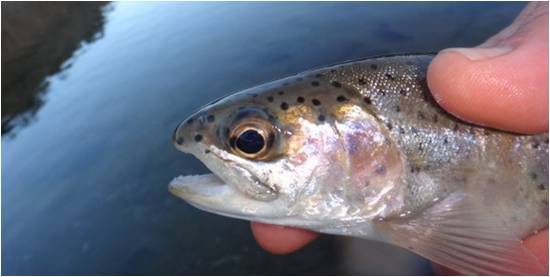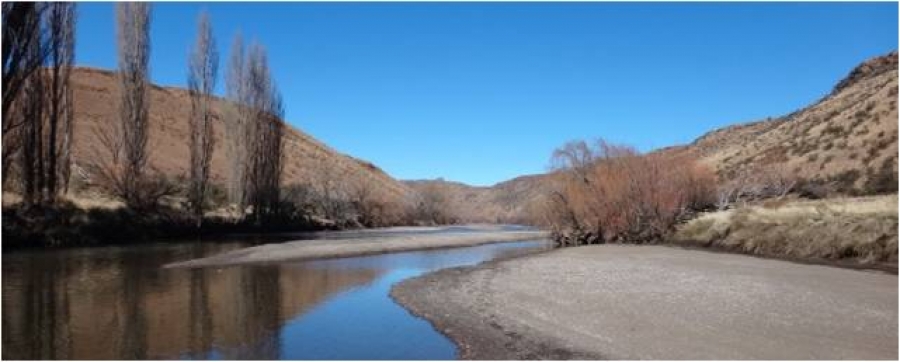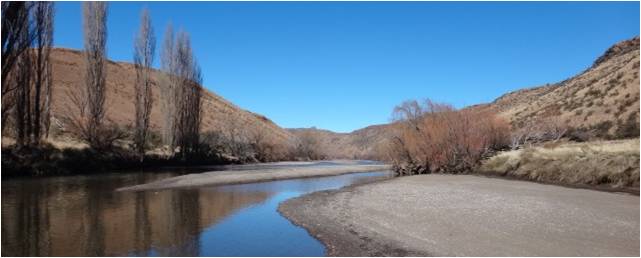
Lekkerbly in mid winter
Click in images to enlarge
With a very mild winter upon us I couldn’t fight the urge to head to the Eastern Cape highlands and spend some time on the stream, river levels are very low at this time of the year and general enquiries led to either vague mumbled responses or just simple “the weather is great though”. We knew we would be up against it, but never having fished this part of the world in winter we decided to throw caution to the wind. The fact that my long awaited 2wt Freestone cane rod had just arrived on my doorstep was all I needed. I have never cast a cane rod but I liked the idea of a rod that was handcrafted from organic material by a genuine craftsman.
The rod is incredibly beautiful and to the eye simply knocks the socks off of any graphite rod I have ever seen. I could have bought a top of the range light weight graphite rod. I had saved the money, but I like to read, and anyone you read will almost always mention the beauty of a bamboo rod. Great fishermen like Marinaro, McGuane, Geirach and the likes all have a soft spot for split cane, so there must be something to it, right?
I had last visited the region at the end of May and some of the smaller streams were already tight with the Sterkspruit and Kraai fishing exceptionally well. But that was two and a half months back and word was that there had been very little precipitation since.
The locals were right; the weather was delightful and although the mornings were crisp with temperatures sometimes dipping to -5C overnight it would climb up to the lower teens by midday. with all the money we spend on winter gear you need to test it out, and to be honest with the sun on my face wrapped up in polar fleece I never felt the cold, except for when you hung around in the water too long. The days were typical winter with a gentle breeze and incredible deep blue skies, the grass veld dry but still full of reds, yellows and ice whites, which although sparse set a pretty landscape in the clear mountain air that provided vivid scenery to a strung out city slickers eye. The huddled clumps of poplars naked in their winter bark looked like old men in a secret conference. Somehow the whole place just seemed older than in spring.
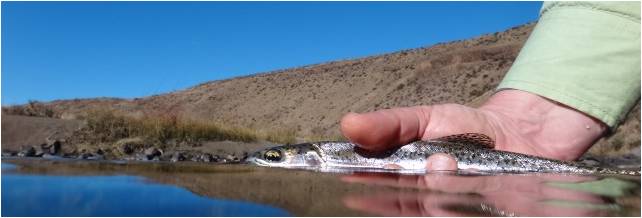
The fish of a thousand miles (and casts!)
We shacked up at Woodlands cottage on Lammergeier Nature reserve, the thought being that because this was a short break it was closer to Joburg and with the Karnemelk running through the property there would be some fishing right nearby. The cottage is set deep in the Karnemelk valley and is very quaint, perhaps a little tight for three adult males and better suited to a honeymoon couple, but none the less liveable, so long as the company is good.
The Karnemelk was extremely low and with the construction of a new causeway across to the cottage the flow had been reduced to a mere trickle. Our host Kevin Isted explained that it had been almost a year since the last good rains so it was surprising that the little stream hadn’t dried up altogether. Probably not best news to fly fishers, but being eternal optimists we rigged up and headed to the stream. I decided to fish up from the cottage and the others down.
The fishing in this part of the world is hot more often than not and although the stream was a trickle I was fairly convinced I would be able to winkle out a couple of small trout if I fished carefully and that was fine by me.
I fished up from the causeway and covered around three miles criss-crossing the stream as I went. I didn’t see fish nor fin and I stopped at Slide Pool for a smoke and a rest. A famed Lammergeier was circling overhead. I lay back and watched it drifting high up, I pondered its view and wanted to ask it if it could see any fish from up there, the light was fading fast and I pushed on hoping to catch and evening rise, but alas I never saw anything and it seemed that all the trout had packed up for winter and headed out, the others did manage a fish each in one of the pools lower down but the outlook was bleak.
How bad can it be? This was to become a reoccurring thought as we hiked mile after mile over extremely thin and cold water in search of a few trout. I can say that I hiked right up the middle of the icy cold Kraai river for at least 4 miles without getting my knees wet and on two different farms on two different days, that’s how bad....
So the water was painfully low, but there were fish around, holding over in the deeper pools and when we ventured to Lekkerbly on the Kraai we saw some big trout, up to 20 inches. Here the real problem was not the lack of water but rather the temperature of the water. The fish wouldn’t feed and the water couldn’t be described as gin clear, oh no, it was far more transparent than that. I managed a dozen fish in three days and hiked a collective 30 miles, give or take a few steps.
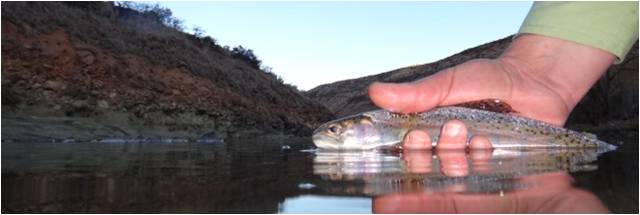
Last chance at Sun down
The fish came on in the last hour of the days rising to a myriad of mixed mayflies, threw caution to the wind and snacked freely to fill themselves. These trout are the breeding stock that will repopulate the streams and rivers in the area once the rains return, so each was handled with the greatest of care.
This was most probably not the best setting to christen a new rod so I didn’t fish the cane exclusively. Like many fly fishermen I am unashamedly riddled with superstition and with the odds against me I put the beautiful little rod together one afternoon on the Kraai.
For a start let me state that I am not an expert on the technical aspects of fly fishing or bamboo, so my opinion here should be taken lightly. I dabble in the knowhow but that’s all. The rod was built by Stephen Dugmore. It is simply a thing of beauty and although weightier in the hand than its graphite counterpart, it somehow feels livelier. I tested the rod with a couple of lines and found a 2WT DT matched best as Stephen had suggested.
I had waded up the Kraai and stopped for lunch, barely unhooking my Para Adams along the way. There just weren’t any fish; the stream bed was acres of sandstone pebbles interspersed with a thin flow of cold liquid as clear as any I have seen. A sparse hatch of mayflies was trickling off and the birds were grabbing them as they broke free of the meniscus. But there were no rises, no tell tale bulges. The water slid by undisturbed like sheets of glass on a factory production line. This was holding water, bubbling under exposed roots, sided by ancient undercuts, with attractive channels and wide riffles. It was all there, but the fish were not. I was building a puzzle in my head and the key piece was all that was missing.
I ate my sandwich in silence, noting that the ham and mustard tasted particularly good; the high point of the day’s proceedings. What a thought. Anyhow, I took down my old faithful 1wt and put together the beautiful little cane rod with added care. I do believe that cane is tougher than graphite and yet somehow I felt inclined to want to carry the rod with two hands as though it was fragile and made of glass. I will have to work on this perception as time goes by.
False casting at short range was slower and smoother, but somehow took more effort, changing 20 years of bad habits isn’t all that easy. A few casts down the run I mended the line and there was a spark. The line lifted off of the water and danced into position. Hang on a bit I thought, and proceeded to roll cast. Once again with very little effort the line rolled out smoothly and flipped over. I messed around a little and suddenly found what I believe to be the cane’s real beauty; the extra flex and weight made for a rod that roll cast and mended line like no other I handled before.
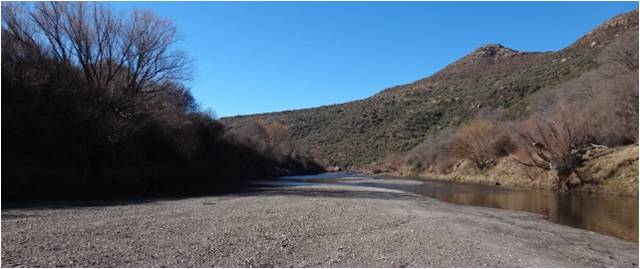
A very Dry Kraai
The rod would be a joy in the tight stuff and suddenly it clicked. I would say that in straight casting a graphite rod is easier, but for on the water rolling and mending the cane had so much more to offer. A whole new world opened up. We made our acquaintance that day and although it’s early days yet I have a strong feeling the little cane rod will come into its own and allow me a whole new range of skills. Perhaps that is why the great fly fishermen describe cane as more lively. What I am sure of is that you cannot fish a cane rod with graphite expectancy; those that try will fail dismally and will bad mouth cane. You need to figure out its strengths and weaknesses and adjust accordingly. Cane allows an avenue for new discoveries and after all isn’t that half of the reason we fish?
The last afternoon on the Kraai the fish came on and as if the region knew of my great love affair with its fish and its streams it gave me a great good bye with a couple of nice fish up to 15 inches on a Para-quill, just enough to get the adrenalin flowing through my weary body and soothe my aching bones and to remind me that although the fishing had been tough, there would always be the chance of success where hope thrived.
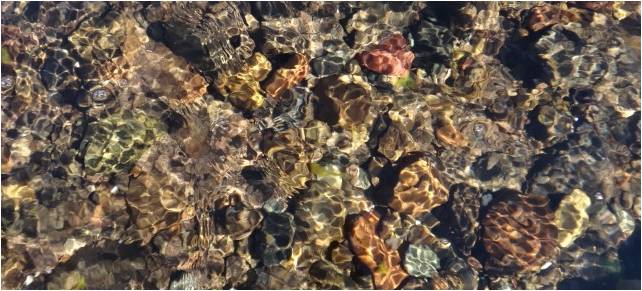
I like mine with single malt!!
I go fishing to catch fish. Some times are better than others. A recent quote from Wolf Anvi has it that … “Sometimes you eat the bear, sometimes the bear eats you”. Generally you will find the Eastern Cape highland trout accommodating in all their seasons. If the water was low and cold on this trip it also provided a different landscape to explore and learn. My love affair with the region, its fish and the kind people that manage its bounty, has not remitted. As soon as the rains arrive you’ll probably find me chasing the clouds over the big sandstone cliffs that swallow your soul and show you to some of the finest streams and fat mountain trout going about their days, places to forget your responsibilities on.
